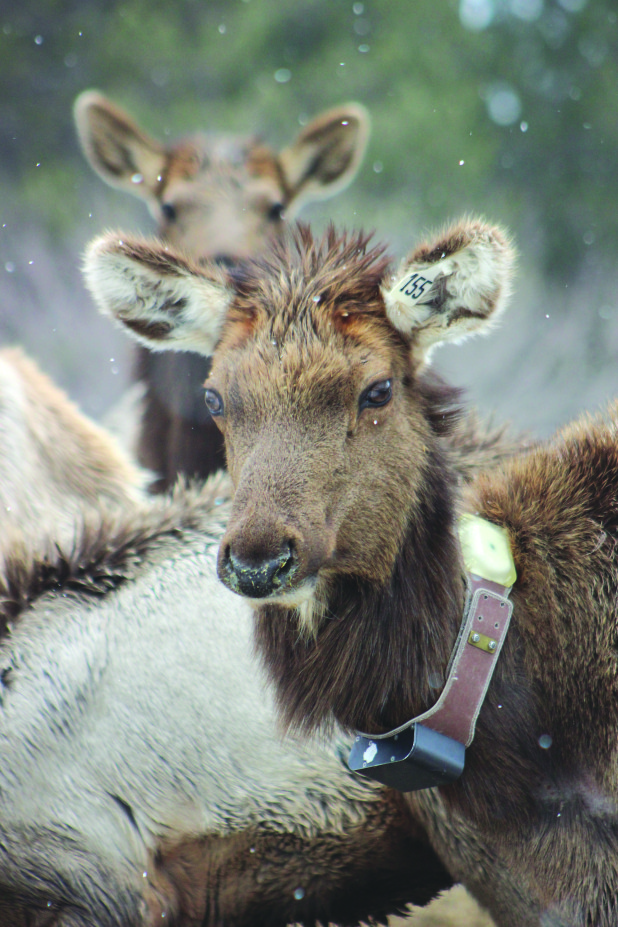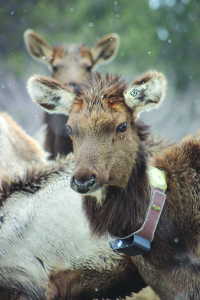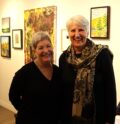Archive » Headline News » News
Tour Group Discovers the Majestic Elk
April 15, 2014

 By Nate Smelle
By Nate Smelle
On the cold windy morning of Saturday a group of 15 at the train station in Bancroft for the first of this seasons Nature Discovery Tours. Before the crew set out on their expedition to observe “the majestic elk,” the group assembled in the conference room in the basement of the train station for a breakfast snack. The tour is part of a series nature-based interpretive programming created by the Bancroft Area Stewardship Council (BASC) and the Bancroft and District Chamber of Commerce (BDCC).
A ambassador for the Bancroft Elk Restoration Project, Barry Wannamaker gave an informative presentation on some of the success and struggles witnessed throughout the 14 years since the elk released back into the wild of North Hastings. As of the leading members of the organization committee who brought the elk back to the Bancroft area. Wannamaker see’s the project as an overwhelming success.
“It has been a blast, and I have loved every minute” said Wannamaker.
“It`s great to see how successful the program has been. Some reports say it is moderately successful, but I think it has been fabulously successful.”
Steve Wilkins, the chair of the BASC, has also been a champion of the project since they were initially released back in 2000. Like Wannamaker, he has witnessed the emotional roller coaster ride that has returned this species back to its native habitat here in North Hastings. Over coming the many bureaucratic and logistical hurdles that stood in the way of herds migration from Alberta to the release site in Hartsmere was not easy according to Wilkins and Wannamaker, however, both of them feel that it has been worth while. Nearly a decade and a half into the project, the area is beginning to reap the benefits of the elks’ return.
“It has been awesome to watch this tour get off the ground,” Wilkins said.
“The Bancroft site is the best, the most productive and the most successful release site in Ontario. These kinds of tours are what we were talking about way back in 1995. We wanted to make the elk one of the gems one of the Bancroft area and the reason it has worked is because of people like Barry [Wannamaker] here, and John O`Donnell.”
Recently moving to the area from Georgetown, Ontario woodburning artist John was part of the first tour group eager to catch a glimpse of the herd. Although many on the tour had never seen Elk before it was John’s first sighting of a solitary bull elk along Hwy. 28 recently that compelled up for the tour.
“I saw one gazing on the side of the road on my way up here not too long ago and I can see why they call them the Majestic Elk,” said tour group member John Tathom.
When the presentation concluded the tour group hopped in their vehicles and headed east on Hwy. 28 towards a popular viewing site in Hartsmere. Upon arriving to the location, a herd of nearly 50 animals was immediately visible. Welcoming the tour to his own little slice of paradise the Elk Man, Joe Neuhold, stood proudly grinning ear to ear among his antlered brethren. Obviously excited to share his passion for these creatures with the interested party, he brought out buckets of grain and hay to bring the elk in closer for the group to see.
Neuhold lives with his dog Terry in a wood cabin on the site. During the winter he helps the herd along by providing them with food when sources are low. Neuhold says that he greatly values spending time with the elk and enjoys getting to know them. Over the years he has learned first hand some of the secrets of the elk behaviour.
“They are like people,” he said.”
“Each one is very different. They will act one way when there are people around and another when they don’t think they are being watched.”
In spite of the success of the Bancroft Elk Restoration Project, Neuhold is concerned for the future health of the population. This year he has recognized a sharp decrease in the number of mature bulls present in and around the feeding site he manages. Because of his observations he believes there should be no hunting of bull elk this year, or at least the amount of tags available for the hunt needs to be drastically reduced.
“All of the big, mature bulls are now gone,” said Neuhold.
“I would like to see the MNR not give out any bull tags this year. If they keep on going the way they are we are not going to have any elk left. Looking at the old videos I used to have about 16 big, mature bulls. It was just fantastic!”
Last year Neuhold said a hunter waited on the neighbour’s property adjacent the feeding site and shot three bull elk as soon as they crossed the fence line. To help maintain the population of the herd Neuhold would also like to see the elk protected within a buffer zone of the feeding site.
Wannamaker affirmed Neuhold’s concerns stating the MNR recorded seeing only one mature bull elk during an aerial survey of the herd recently conducted in January 2014.
“They didn`t see as many bulls this year during the 2014 fly study,” said Wannamaker.
“They like to see a ratio of 20 bulls to 100 cows, and from what they saw on the map this year they had about eight bulls per 100. This raises the question whether too many bulls are being taken during the hunt.”
After learning how elk behaviour varies throughout the year many on the tour said they planned to come out for the tours planned this July 14and Aug. 25. The next Nature Discovery Tour on slate is the tour of the North Hastings Community Fish Hatchery on April 26. To register, and for more information contact the BDCC at 613-332-1513, or visit www.bancroftdistrict.com.


















You must be logged in to post a comment.